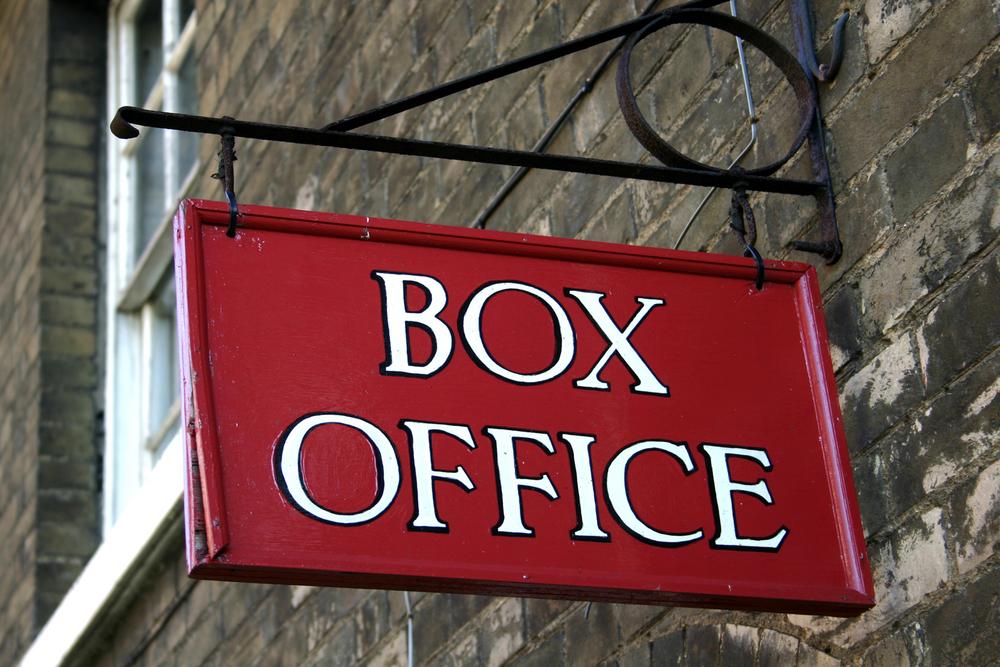"A Means to Change." An Innovative Funder Surveys the State of Nonprofit Theater
/photo: Shutterlist/shutterstock
When the William R. Kenan, Jr. Charitable Trust's launched a $6 million engagement initiative to bring the arts to historically disenfranchised neighborhoods in New York City, Assistant Executive Director Dr. Dorian Burton articulated a growing view across the arts funding community:
Philanthropic efforts in the arts must make a fundamental shift from charitable gifts that exclude to justice-oriented giving that creates equitable access for all.
The theater field is hardly immune to Burton's clarion call for "equitable access."
Thanks to budget cuts, many high schools across the country have no theater education programs whatsoever. This is why NBC Chairman Robert Greenblatt's $500,000 gift to the Educational Theatre Association’s JumpStart Theatre program was so important. Its goal is to create sustainable musical theater programs in middle schools that previously had none.
We've also been keeping a close eye on the New York City-based Theatre Forward, which is taking the lead in creating more demographically representative theater communities across the U.S.
Theatre Forward recently announced its first round of Advancing Strong Theatre Grants. At $50,000, the grants seek to "accelerate change in the areas of equity, diversity, and inclusion by providing the resources for recipients to explore, initiate or deepen collaborative relationships with those from a group currently underrepresented in the activities of the theater as audience members or participants in other programs."
The four winning theaters—Dallas Theater Center, the Guthrie Theater of Minneapolis, the Old Globe of San Diego, and Seattle Repertory Theatre—were chosen from among the 19 eligible Theatre Forward member theaters.
Funding for Advancing Strong Theatre is provided by the Schloss Family Foundation, Citi, Bank of America, the Theatre Forward Board, and a cadre of individual donors.
I recently had the opportunity to speak with Theatre Forward Executive Director Bruce Whitacre about the challenges facing organizations in the area of boosting equity, what constitutes meaningful audience engagement, the impact of potential cuts to public funding, and other timely topics.
Here is a recap of our discussion.
Obstacles to Equity
Stakeholders across the theater ecosystem understand the importance of cultivating a more diverse audience community. But as with most challenges of this nature, the devil is always in the details. This fact is particularly acute for organizations operating in communities with rapidly shifting demographics. I asked Whitacre to articulate some of the institutional and organizational obstacles that prevent organizations from adopting inclusion and equity practices.
"Many of these institutions were founded 50-plus years ago, and face deep-rooted historic perceptions of who and what they are, both internally and externally," he said. "For some time now, they have been addressing this issue and working to turn their spaces into truly inclusive and equitable places.
Bruce WHitacre
"They are taking steps to change the perceptions within their communities, but for many, history and their large scale make implementation a slow process. The many different stakeholders—boards, donors, patrons, volunteers, community members, staff—all require different strategies to help them adopt these practices in an authentic way.
"Cast members, ushers, staff, boards and leadership at theaters have also been historically more homogenous than diverse, which has also been an obstacle to authentically adopting these practices."
This issue of organizational inertia is compounded by the "lack of funding for arts education and field trips," which creates a divide "within communities among those who have access or who feel a connection to theater, and those who do not."
Fortunately, we've seen some progress on this front. For example, the Rockefeller Foundation funded an incredibly successful program enabling disenfranchised kids to see Hamilton. But there's still much work to be done. Theater, according to Whitacre, "is no longer seen as a populist activity, but instead, one for the elites. It is an evolution to engage what is traditionally an older, white audience with unfamiliar work."
Lastly, "it is a challenge to invite audiences who typically come to the theater for one specific show a year to engage in the programming year-round." (We'll revisit Whitacre's thoughts on cultivating sustainable engagement later in this piece.)
Making the Case for Theater
Again, funders aren't being cagey when it comes to their most urgent priorities. They demand greater equity, both in terms of access to the arts and representation across performing arts fields. But this doesn't mean they'll cut blank checks, especially with so many organizations vying for limited funding. And so I asked Whitacre to provide some tactical advice for organizations looking to "make the case" for funding to support equity-based programming and initiatives.
"Position your theater as a means to change, as well as an end when it comes to cultural impact," he said. "Donors wishing to achieve such objectives to strengthen community, empower individuals, improve workforce skills, address access and inequality and bridge the gaps that divide us will respond to these programs, even though they do not usually look to theater to address these issues, or as an area they necessarily want to support."
Whitacre's thoughts here speak to the growing consensus across the funding community around the "soft" benefits of the arts experience. Attuned to the impact of budget cuts across communities, institutional funders in traditionally underfunded fields like dance and theater intuitively believe that "the arts experience" is a good thing. Better yet, a growing body of evidence also points to the quantifiable benefits of the arts, particularly in its ability to boost economic development, should the funder in question be metrically inclined.
"Also make sure that your organization embodies or is striving to embody the same principles you are seeking funding to implement," Whitacre continued. "Be as authentic and sustained in this activity as possible. This can lead to some excellent conversations within the community, and will give donors confidence that this is a core commitment of the institution."
Defining "Engagement"
Taking the idea of articulating impact a step further, we next discussed the tricky issue of "engagement."
Engagement remains the Rosetta Stone for arts organizations, yet there isn't much consensus across the donor community around what it actually means. A study conducted by the National Center for Arts Research at Southern Methodist University illustrates the breadth of this challenge.
The study's authors found that the average arts and culture organization in the U.S. engaged with 13.4 percent of its local population, either in person or online, in 2013. At the same time, the authors noted that their metric of "total touch points" does not reveal the duration, depth or quality of engagement each person has with the organization.
The takeaway, here? There's engagement, and then there's meaningful engagement.
"We thought a lot about this," Whitacre said, "and it came down to sustained, authentic, truly collaborative efforts that start from the community’s point of view and bring the theater to individuals in ways they can access: locally, within partner organizations where they are active, in sync with their schedules, and in ways that touch upon what they care about. Through this, theater becomes a more meaningful community resource.
"Meeting ticket goals or filling houses were not a priority, here. These are new initiatives that take place primarily in the community, with the theater building often serving as a celebratory, culminating place to bring everyone together. So we work with our partner theaters to define engagement in terms that serve their specific program, as opposed to unilaterally defining it for the group."
Keeping it Local
Whitacre also noted that effective engagement serves a second purpose of acting as a bulwark against public funding cuts.
Federal aid "is not as significant to our theaters as state and local funding," which "have sometimes been subject to last-minute cuts or proposed cuts," he said. These potential cuts represent "the greatest fundraising risk our theaters face in the short term."
But politicians would find it harder to swing the ax if the organizations in question have generated substantial impact across the communities they serve.
"Effective community engagement programs can swing the tide and help retain funding," Whitacre said. "When a theater has a broad, valued community presence, it is better able to demonstrate to the local government in particular the vital role it plays throughout the region and economy."
Moving forward, the primary goal for organizations should be effectively articulating this value to the community.
"While we have long known theater and all the arts make concrete contributions to community, as well as to our culture and our moment in humanity, listening to communities and meeting them where they are bring those contributions alive in new and exciting ways.
"The challenge remains to convey this impact to all our stakeholders."








































